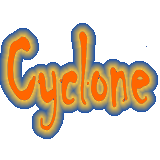01-09-2025, 03:39 AM
Introduction
Spa products occupy a unique convergence of wellness, self-care, and luxury. From botanical-infused body scrubs to aromatherapy oils, these products have transcended traditional spa settings to become essential elements of everyday self-care routines. The global market for spa products is experiencing substantial expansion, fueled by rising consumer interest in holistic health, premium experiences, and eco-conscious formulations.
Market Overview & Projections
The global spa products market size was valued at USD 103.2 billion in 2024 and is projected to grow from USD 111.8 billion in 2025 to USD 184.5 billion by 2033, exhibiting a CAGR of 6.5% during the forecast period (2025–2033). The growth of the market is attributed to the spa industry's expansion, driven by specialized backbar innovations.
Growth in this sector is strongly tied to both established and emerging markets, as spas expand, home wellness rituals take off, and clean, natural beauty trends gain traction across a broad demographic.
Key Growth Drivers
1. Surge in Wellness & Self-Care Demand
Consumers are embracing self-care rituals as part of their daily routines, inspired by mental health awareness and wellness culture. Spa products particularly those focused on relaxation and stress relief naturally fit into this evolving lifestyle.
2. Preference for Clean, Natural, and Sustainable Products
Eco-conscious formulations, cruelty-free labels, biodegradable packaging, and sustainably sourced botanicals are increasingly preferred as consumers demand transparency and ethical practices in their wellness purchases.
3. Expansion of Spa Infrastructure & Luxury Experiences
Luxury spas, wellness retreats, and hotel resorts remain key sectors for spa product sales. These premium venues set trends and drive demand for high-end formulations tailored to exclusive guest experiences.
4. Digital Retail & Customized Experiences
E-commerce platforms have broadened access to spa-grade products, making them more accessible to home consumers. Personalized self-care packages such as stress-relief or anti-aging kits are gaining traction.
5. Product Diversification for Targeted Needs
Brands are expanding beyond classics to offer niche solutions men’s grooming lines, anti-ageing serums, detoxifying body masks, and facial rejuvenation products to meet evolving consumer concerns.
Product Segmentation & Popular Categories
Spa product offerings are diverse and categorized by type, distribution channel, application, and user:
By Product Type:
Skincare products (top segment), aromatherapy oils, massage/body oils, facial masks & wraps, scrubs, exfoliants, and bath products like salts and mineral soaks.
By Application:
Focus areas include stress relief, facial rejuvenation, detoxification, anti-aging, pain or muscle recovery, hydration, and overall skin brightening.
By Distribution Channel:
Products are delivered through spa and wellness centers, online retailers, professional distributors, pharmacies and cosmetic chains, as well as boutique resort outlets.
By End-User:
Key segments encompass day spas, resort retreats, medical spa clinics, at-home wellness consumers, corporate wellness programs, and holistic centers like yoga or meditation studios.
Regional Market Insights
North America
Retains the largest share of the spa products market, driven by high consumer spending, strong spa culture, and wellness-conscious behaviors.
Asia-Pacific
Expected to be the fastest-growing region, thanks to rising incomes, expanding tourism, and increasing interest in wellness and beauty care across markets like China, India, and Southeast Asia.
Europe
A sophisticated market that blends traditional spa heritage with a growing demand for organic and eco-luxury spa lines particularly in destination spas and wellness tourism hotspots.
Other regions such as Latin America and the Middle East are showing steady growth, especially in hospitality-led spa consumption.
Trends & Innovations
Personalized & Tech-Enabled Wellness: Consumers are leaning into spa product experiences that combine tailored formulas with smart tools or app-driven regimens.
At-Home Spa Evolution: Driven by convenience and lifestyle shifts, DIY spa treatments and at-home wellness tools are gaining massive popularity.
Luxury Meets Sustainability: Even high-end brands are adapting to eco-demand combining premium quality with responsible sourcing and packaging.
Spas as Product Launchpads: Resorts and medical-day spas play a pivotal role in testing and popularizing new formulations before rollout.
Market Challenges
Intense Competition from Mass Beauty Brands: Drugstore beauty products are raising the bar, often offering spa-inspired claims at affordable price points.
Regulatory Complexity: Varying regulations across regions add complexity to ingredient selection, testing, and labeling especially for international brands.
Quality vs Cost Pressures: Maintaining clean, high-quality formulations while keeping products accessible can be a delicate balancing act.
Future Outlook
By 2033, the spa products market is expected to approach or exceed USD 185 billion, propelled by consumer demand for wellness-infused routines, digital shopping platforms, and eco-friendly innovation.
Brands that align sustainability with performance, leverage technology to personalize experiences, and tap into wellness tourism markets will be well-positioned for growth in the evolving spa products landscape.
Conclusion
The spa products market is more than beauty it's a wellness ecosystem. It blends relaxation, self-care, and lifestyle with scientific innovation and ethical responsibility. As our world continues to prioritize well-being, spa products will stand front-and-center bridging luxurious indulgence with everyday health rituals.
Looking to the future, those brands and retailers that innovate smartly, engage authentically, and deliver results will define spa-driven self-care for the next decade.
Spa products occupy a unique convergence of wellness, self-care, and luxury. From botanical-infused body scrubs to aromatherapy oils, these products have transcended traditional spa settings to become essential elements of everyday self-care routines. The global market for spa products is experiencing substantial expansion, fueled by rising consumer interest in holistic health, premium experiences, and eco-conscious formulations.
Market Overview & Projections
The global spa products market size was valued at USD 103.2 billion in 2024 and is projected to grow from USD 111.8 billion in 2025 to USD 184.5 billion by 2033, exhibiting a CAGR of 6.5% during the forecast period (2025–2033). The growth of the market is attributed to the spa industry's expansion, driven by specialized backbar innovations.
Growth in this sector is strongly tied to both established and emerging markets, as spas expand, home wellness rituals take off, and clean, natural beauty trends gain traction across a broad demographic.
Key Growth Drivers
1. Surge in Wellness & Self-Care Demand
Consumers are embracing self-care rituals as part of their daily routines, inspired by mental health awareness and wellness culture. Spa products particularly those focused on relaxation and stress relief naturally fit into this evolving lifestyle.
2. Preference for Clean, Natural, and Sustainable Products
Eco-conscious formulations, cruelty-free labels, biodegradable packaging, and sustainably sourced botanicals are increasingly preferred as consumers demand transparency and ethical practices in their wellness purchases.
3. Expansion of Spa Infrastructure & Luxury Experiences
Luxury spas, wellness retreats, and hotel resorts remain key sectors for spa product sales. These premium venues set trends and drive demand for high-end formulations tailored to exclusive guest experiences.
4. Digital Retail & Customized Experiences
E-commerce platforms have broadened access to spa-grade products, making them more accessible to home consumers. Personalized self-care packages such as stress-relief or anti-aging kits are gaining traction.
5. Product Diversification for Targeted Needs
Brands are expanding beyond classics to offer niche solutions men’s grooming lines, anti-ageing serums, detoxifying body masks, and facial rejuvenation products to meet evolving consumer concerns.
Product Segmentation & Popular Categories
Spa product offerings are diverse and categorized by type, distribution channel, application, and user:
By Product Type:
Skincare products (top segment), aromatherapy oils, massage/body oils, facial masks & wraps, scrubs, exfoliants, and bath products like salts and mineral soaks.
By Application:
Focus areas include stress relief, facial rejuvenation, detoxification, anti-aging, pain or muscle recovery, hydration, and overall skin brightening.
By Distribution Channel:
Products are delivered through spa and wellness centers, online retailers, professional distributors, pharmacies and cosmetic chains, as well as boutique resort outlets.
By End-User:
Key segments encompass day spas, resort retreats, medical spa clinics, at-home wellness consumers, corporate wellness programs, and holistic centers like yoga or meditation studios.
Regional Market Insights
North America
Retains the largest share of the spa products market, driven by high consumer spending, strong spa culture, and wellness-conscious behaviors.
Asia-Pacific
Expected to be the fastest-growing region, thanks to rising incomes, expanding tourism, and increasing interest in wellness and beauty care across markets like China, India, and Southeast Asia.
Europe
A sophisticated market that blends traditional spa heritage with a growing demand for organic and eco-luxury spa lines particularly in destination spas and wellness tourism hotspots.
Other regions such as Latin America and the Middle East are showing steady growth, especially in hospitality-led spa consumption.
Trends & Innovations
Personalized & Tech-Enabled Wellness: Consumers are leaning into spa product experiences that combine tailored formulas with smart tools or app-driven regimens.
At-Home Spa Evolution: Driven by convenience and lifestyle shifts, DIY spa treatments and at-home wellness tools are gaining massive popularity.
Luxury Meets Sustainability: Even high-end brands are adapting to eco-demand combining premium quality with responsible sourcing and packaging.
Spas as Product Launchpads: Resorts and medical-day spas play a pivotal role in testing and popularizing new formulations before rollout.
Market Challenges
Intense Competition from Mass Beauty Brands: Drugstore beauty products are raising the bar, often offering spa-inspired claims at affordable price points.
Regulatory Complexity: Varying regulations across regions add complexity to ingredient selection, testing, and labeling especially for international brands.
Quality vs Cost Pressures: Maintaining clean, high-quality formulations while keeping products accessible can be a delicate balancing act.
Future Outlook
By 2033, the spa products market is expected to approach or exceed USD 185 billion, propelled by consumer demand for wellness-infused routines, digital shopping platforms, and eco-friendly innovation.
Brands that align sustainability with performance, leverage technology to personalize experiences, and tap into wellness tourism markets will be well-positioned for growth in the evolving spa products landscape.
Conclusion
The spa products market is more than beauty it's a wellness ecosystem. It blends relaxation, self-care, and lifestyle with scientific innovation and ethical responsibility. As our world continues to prioritize well-being, spa products will stand front-and-center bridging luxurious indulgence with everyday health rituals.
Looking to the future, those brands and retailers that innovate smartly, engage authentically, and deliver results will define spa-driven self-care for the next decade.






